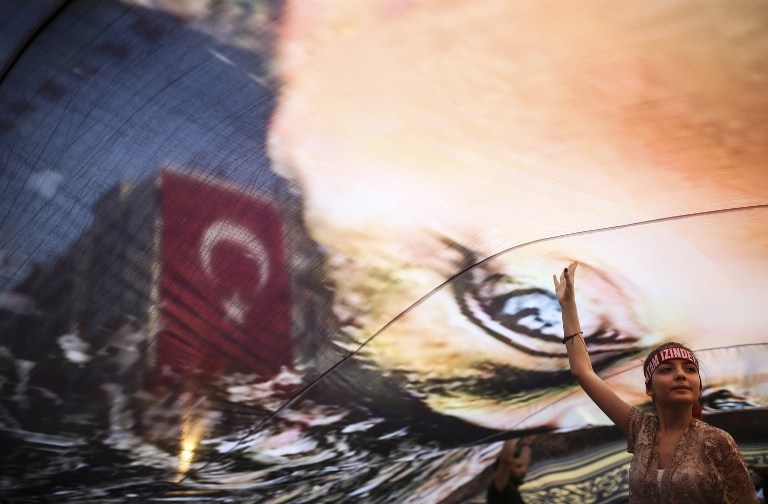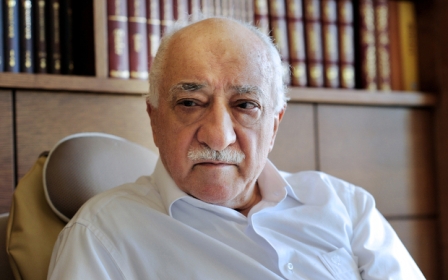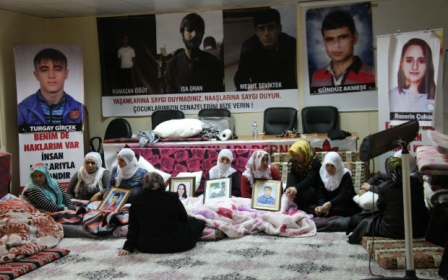The birth of a new Turkish republic

Before the start of the annual gathering of Turkey's Military Consultative Council last week, the prime minister and top armed force commanders, following tradition, stood before the tomb of the Republic’s founder Mustafa Kemal.
Speaking particularly loudly, as if he really desired to be heard and quoted, Binali Yildirim declared that the people had won a second war of independence.
Among the leaders of the Justice and Development Party (AKP), Yildrim may not be the most eloquent speaker. Once a marine engineer, he is known for an inclination towards the practical and for carefully considered statements.
That is why the connection he drew between the defeat of the 15 July coup and the country's war of independence - not the first such reference by the Turkish leadership in recent weeks - is likely to become the foundation narrative for the birth of a new Turkish republic.
The Ottoman war of independence erupted in 1919 under the leadership of Mustafa Kemal and other Ottoman officers. It was a fight against foreign occupiers in the sultanate's remaining territories after the signing of the humiliating Armistice of Mudros - which among other things triggered the occupation of Constantinople and the partitioning of the Ottoman Empire - at the end of the World War One.
The war ended with victory three years later. But it was not confined simply to the defeat of foreign occupation, but also involved an internal struggle between the Grand National Council and the resistance leadership in Ankara on the one hand and, on the other, those who were loyal to the Istanbul government that was under the hegemony of the occupiers.
Therefore it was not strange that the war turned into a crucible for the birth of a new Turkish nation, established on the remains of both the Ottoman Sultanate and Caliphate.
Although the newly formed Turkish republic relied on the backing of most of the military and civilian institutions of the sultanate itself and was considered, at least from an institutional perspective, an extension of it, it soon made its own mark. By the mid-1930s, the construction of Turkey's new vision of itself and of the world was complete.
So, what sort of state was the Kemalist republic and what sort of society did it desire to make?
Strong state
First and foremost, the republic was a Turkish nationalist state, one which completely ignored the ethnic and cultural plurality of the Turkish people. Turks, Kurds, Arabs, Circassians and other ethnic and cultural groups were intended to be completely melted by both the soft and oppressive powers of the state into a nationalist crucible. It was a process that sometimes bordered on chauvinism.
In a clear reaction to the crises that plagued the Ottoman state in its latter days, the new republic centralised power and gradually grew into an extremely dominating and controlling institution. The state treated its citizens like children who didn't know what was in their best interests and could not distinguish good from evil.
The only frame of reference defining interests and values and pointing the direction to progress and justice was the state, one managed by a political minority governing within a single party. Although in its early years, the state relied on the Islamic identity as one of the elements to define citizenship, it soon waged a vicious war on the role of Islam within the public sphere, not only in politics, legislation and social norms, but also at a purely symbolic level.
It did not shut down mosques or prohibit Turks from practicing their individual rituals. But it subdued the religious institutions completely, dissolving Sufi orders and closing down their Zawiyas (small mosques or prayer room), imposing restrictions on Hajj, proclaimed adhan (the call to prayer) in Turkish, reducing the number of scholars and shrinking Turkey’s links with the Islamic world.
Toward pluralism
By the end of the 1930s, and a little before the death of Mustafa Kemal, the leaders of the republic realised the magnitude of the failure of the regime they had established. They imagined that controlled political pluralism might alleviate the predicament of the state and pave the way for a Turkish renaissance. However, World War Two delayed the project largely until 1950 with the transformation from one-party rule to political pluralism.
With the victory of the Democratic Party under the leadership of Adnan Menderes in 1950, Turkey embarked on an epic search for a new state identity. In this long quest, Turkey witnessed periods of restricted democracy and political pluralism, with four direct or indirect military coups ahead of the failed attempt this summer.
Along this thorny path, a popular prime minister was hanged; tens of thousands of people were imprisoned; tens of thousands of others were killed in clashes or as a result of torture or in terrorist attacks; scores of parties were dissolved and dozens of newspapers shuttered; and since 1984, Turkey has been living through what resembles a limited civil war.
Since the mid-1980s and until the early 1990s, president Turgut Ozal's administration embarked on a process of partial reform of both the state and the economy, opening Turkey to the world. Undoubtedly, Ozal’s efforts had a big impact on society and led to an unprecedented expansion of the middle class and its conservative bloc. Ozal’s reforms paired with the utter failings of the government in the late 1990s delivered the Justice and Development Party to governance in 2002.
One cannot underestimate the reforms undertaken by the Justice and Development governments or their economic achievements and profound social impact. Nor can one downplay the changes adopted in the state's political discourse and its approach to the Kurdish problem. But as a result of extreme political polarisation and the relative decline of Turkey's strategic position, these reforms have been blocked in recent years, especially since 2012.
The Justice and Development era strengthened the power of the people and sharpened their determination to resist any attempt to undermine the democratic system and the rule of law. But the failed coup attempt has shown these reforms were not enough to stop the centres of power within state institutions from trying to pull the country backwards in time.
Transformative opportunities
Today, a window opens before Turkey to embark on a comprehensive and profound reform. There are efforts underway to restructure the armed forces, the interior ministry and the judiciary among other institutions. Yet, these do not provide a sufficient answer to the questions posed about the state and governance in Turkey.
Turkey needs to redefine its identity, widen the margin of liberties, guarantee the fundamental principles of human rights and dignity. The state needs to put an absolute end to relationship of tutelage between the state and its people.
Such a project will necessitate reconsidering the political and educational systems, the nature of the law, the structure of the judiciary and the culture and missions of the security agencies. It will also require restoring the balance between the state’s developmental policies and its social responsibilities. A new constitution free from the fingerprints of the military regime of the 1980s under whose guise the current constitution was written is a must.
Most of all, the new Turkey must redefine its role and position in the region and the world.
There is no need for an absolute and complete break with the Kemalist state. Nations, anyway, do not rise through cutting themselves off from their histories. What is necessary today is the reassembling of Turkey’s entire heritage at least since the final years of Ottoman rule. Such a legacy should be remoulded and the foundation work for a new republic should begin.
- Basheer Nafi is a senior research fellow at Al Jazeera Centre for Studies.
The views expressed in this article belong to the author and do not necessarily reflect the editorial policy of Middle East Eye.
Photo: A Turkish girl under a huge picture of modern Turkey's founder Mustafa Kemal Ataturk at a rally in Gundogdu Square in Izmir on 4 August 2016, protesting against the failed July 15 military coup attempt (AFP).
This article is available in French on Middle East Eye French edition.
New MEE newsletter: Jerusalem Dispatch
Sign up to get the latest insights and analysis on Israel-Palestine, alongside Turkey Unpacked and other MEE newsletters
Middle East Eye delivers independent and unrivalled coverage and analysis of the Middle East, North Africa and beyond. To learn more about republishing this content and the associated fees, please fill out this form. More about MEE can be found here.





